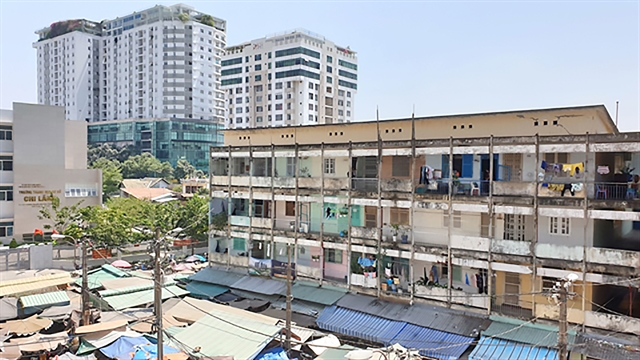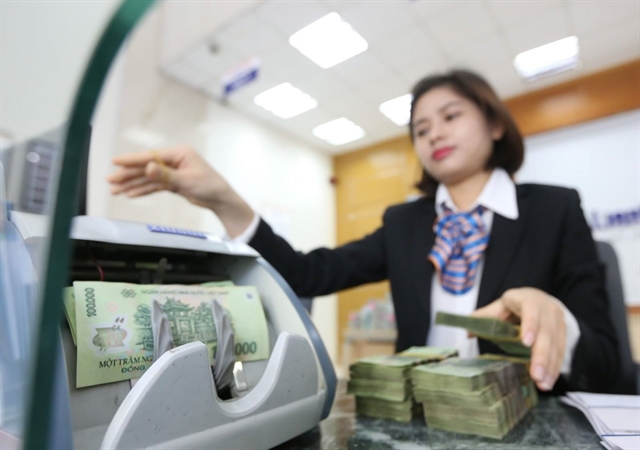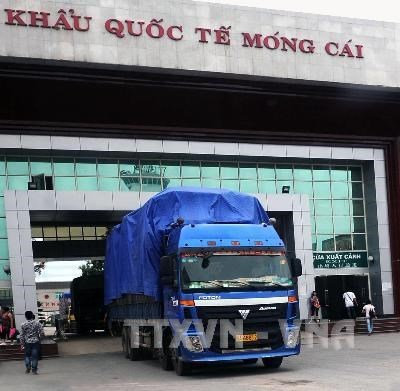 Society
Society


|
| Móng Cái International Border Gate in the northern province of Quảng Ninh has stopped receiving trucks with farming products for export to China. — VNA/VNS Photo |
HÀ NỘI — The northern provinces of Lào Cai and Quảng Ninh have decided to temporarily halt receiving vehicles carrying fresh fruit for export to China via some of their border gates and crossings, as congestion is still an issue.
Lào Cai is going to suspend the reception of vehicles at Kim Thanh International Land Border Gate No 2, the Chinese counterpart of which is Beishan, from Tuesday (January 18) until further notice.
In an urgent announcement sent to localities nationwide on Sunday, the Lào Cai provincial People’s Committee said China’s Yunnan Province has resumed imports of fresh fruit through this border gate pair since January 12.
However, as the Chinese side is implementing strict anti-COVID-19 measures, the gates’ customs clearance for fresh fruits remains modest, with only 60 lorries passing through from January 12 to 15. While nearly 1,000 vehicles carrying the produce, including dragon fruit, mango, watermelon, and jackfruit, are currently stranded at border gates in Lào Cai, the Kim Thanh border gate has already been overloaded and is unable to handle more.
Therefore, to ease congestion and reduce expenses and losses, Lào Cai asked authorities of other provinces and cities to recommend their businesses, cooperatives, and farmers temporarily halt exporting fresh fruit via its border gates.
It also pledged to carry out comprehensive measures and maintain frequent contact with Yunnan authorities to facilitate customs clearance at the Kim Thanh - Beishan border gate pair.
Quảng Ninh Province stopped handling trucks of fresh fruits, frozen aquatic products, and others that cannot be preserved through border gates and crossings in Móng Cái City from Monday (January 17) to the end of the Lunar New Year holiday, which will start in the next two weeks.
The provincial People’s Committee said the suspension aims to thoroughly deal with the goods now stranded at border gates and crossings in Quảng Ninh by January 31 and to avoid pandemic risks, or the Chinese side may stop customs clearance again.
It also called on provinces and cities across the country to notify their businesses and related organisations and individuals.
After a 20-day suspension, the Chinese province of Guangxi on January 10 restored customs clearance at three points of entry in Dongxing city whose counterparts in Móng Cai City are the border gates of Bắc Luân 1 Bridge, Bắc Luân 2 Bridge, and the Km3+4 floating bridge.
Meanwhile, Quảng Ninh Province People’s Committee has asked the health sector and local authorities to respond to any new developments of the COVID-19 pandemic.
Accordingly, the province’s health department was asked to review the province’s preparations relating to medical materials and equipment, testing bioproducts and preventive equipment for the scenario in which the daily new COVID-19 infections in the province reaches 1,000 or 2,000 cases and even up to 10,000.
The department must also study and meet the demand for oxygen and ventilators at treatment facilities designed for COVID-19 patients in critical condition.
Provincial hospitals were asked to support localities to develop logistics plans for specific developments of the pandemic.
The People's Committees of districts, towns and cities were asked to make use of available on-site resources and improve their logistics capacity to carry out fast and proactive testing and tracing.
People were called on to prepare rapid tests for SARS-CoV-2 and to perform testing when detecting a risk of infection.
By the end of Sunday, all people aged 12 and over in the province had been vaccinated against the COVID-19 with 1,083,478 people accounting for 96.53 per cent of the vaccinated people receiving two doses. The number of people receiving the 3rd injection reached 61.2 per cent. VNS




